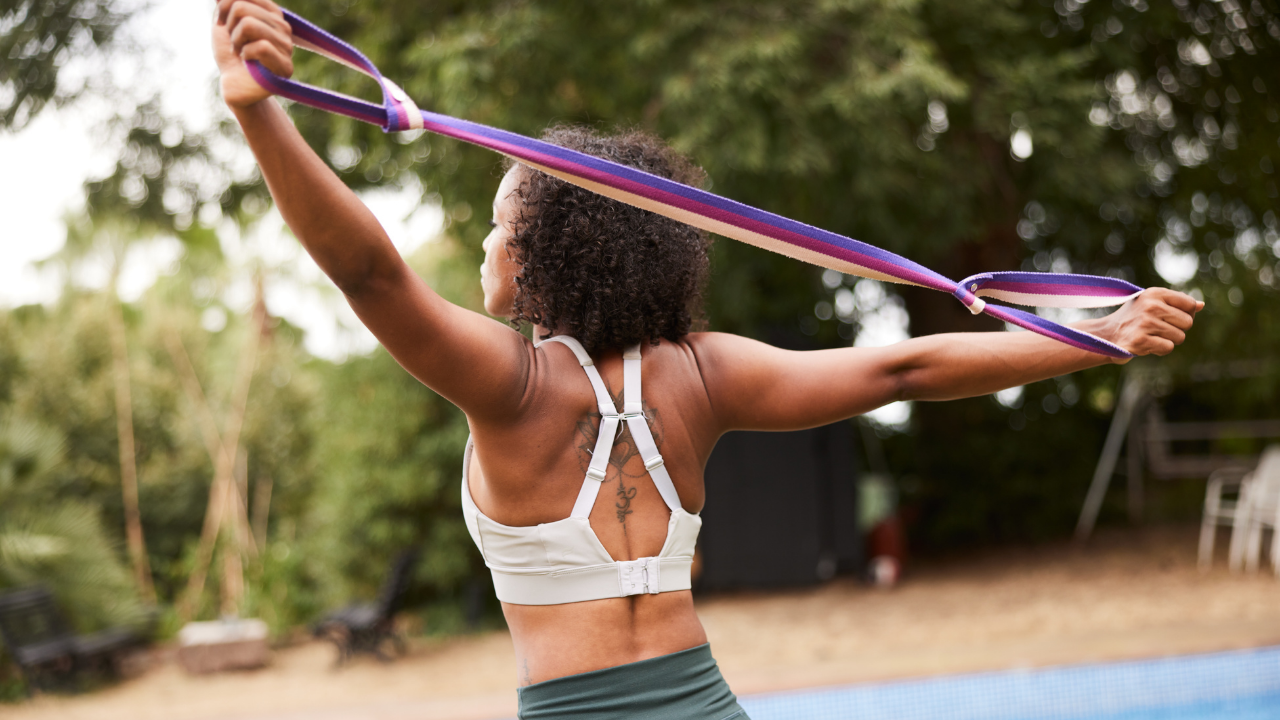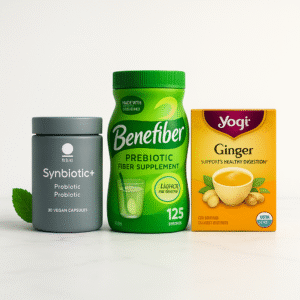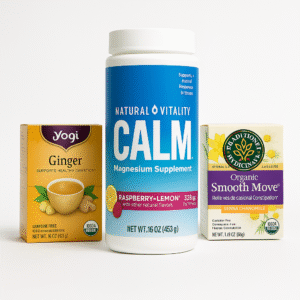The 5 Best Stretch Straps for Better Excercise
Stretch straps, also called yoga or physical therapy straps, improve stretching exercises. They come in different materials, lengths, widths, and colors. Using them can increase range of motion, flexibility, and prevent injuries. They’re easy to use and attach to various body parts or objects.

Stretching straps also known as yoga straps or physical therapy straps, are flexible bands that can be used to enhance your stretching exercises.
They help you increase your range of motion, improve your flexibility, and prevent injuries ✅✅.✅
Stretching straps can be made of various materials, such as rubber, nylon, or cotton.
They come in different lengths, widths, and colors to suit your preferences and needs.
Stretching straps are easy to use and can be attached to different parts of your body or to external objects.
What are Stretch Straps Made Of?
Stretch straps are typically made of durable materials that can withstand repeated use and stretching. The most common materials used in stretch straps include:
Cotton
Cotton is a soft and comfortable material that is often used in yoga straps. It is breathable and absorbs sweat ✅, making it ideal for hot yoga or intense stretching sessions. A brand that uses cotton in their stretch straps includes Tumaz Yoga Strap.
Nylon
Nylon is a strong and lightweight material that is commonly used in physical therapy straps. It is resistant to wear and tear, making it ideal for high-intensity stretching and rehabilitation exercises. Brands that use nylon in their stretch straps include OPTP Stretch Out Strap and RangeMaster Stretch Strap.
Rubber
Rubber is a naturally occurring material that is derived from the sap of rubber trees or from synthetic sources that are often used in elastic yoga straps. It is stretchy and resilient, allowing for a wide range of motion and flexibility. Brands that use polyester in their stretch straps include AZURELIFE stretching strap and Trideer Stretching Strap.
How Do You Stretch with a Stretching Strap?
A stretching strap is a long, flexible band that can help you execute different stretching exercises targeting various parts of the body.
Here are step-by-step instructions on how to use a stretching strap:
➊ Choose the right strap: Select a stretching strap that is appropriate for your body size and flexibility level. Make sure it is long enough to wrap around the target muscle or joint.
➋ Loop the strap: Wrap the strap around the target muscle or joint and hold onto both ends of the strap.
➌ Pull gently: Use your hands to pull the strap gently until you feel a comfortable stretch. Avoid overstretching or pulling too hard, as this can cause pain or injury.
➍ Hold the stretch: Hold the stretch for 15 to 30 seconds, breathing deeply and relaxing your muscles. Repeat the stretch 2 to 4 times on each side.
➎ Adjust the tension: You can adjust the tension of the stretch by pulling the strap tighter or looser. This can help you deepen the stretch or make it more comfortable.
Here are some tips for beginners and advanced users when using a stretching strap:
✔️Warm up before stretching to avoid injury and increase blood flow ✅.
✔️Breathe deeply and relax your muscles as you stretch.
✔️Hold each stretch for at least 15 to 30 seconds and repeat 2 to 4 times per side.
✔️Do not overstretch or bounce as this can cause pain or damage to your tissues.
✔️Adjust the length and position of the strap according to your flexibility and comfort level.
Best Stretching Straps Available on the Market
AZURELIFE stretching strap
Made of natural rubber, features multiple loops for various stretches, and comes with a carrying bag for easy transport and storage.

OPTP Stretch Out Strap
Features multiple loops for various stretches, and includes an instructional booklet with stretching exercises, made of durable nylon.

Trideer Stretching Strap
Made of high-quality rubber, features multiple loops for various stretches, and comes with a carrying bag for easy transport and storage.

Tumaz Yoga Strap
Made of durable polycotton, features a non-slip buckle for a secure grip during stretches, available in multiple colors and sizes.

RangeMaster Stretch Strap
Made of durable nylon, features multiple loops for various stretches, and includes an instructional booklet with stretching exercises.

What is the Use of Yoga Straps?
Yoga straps are a type of stretching strap that is specifically designed for yoga practice. They can be used to enhance your yoga practice in several ways:
✔️Provide support and form alignment by bridging the gap in your flexibility and elongating your muscles and tendons. By using a strap to extend your reach, you can maintain a straight spine and avoid rounding or hunching.
✔️Improve your posture by preventing you from reaching into poses, tensing your shoulders, or rounding your back.
✔️Deepen your stretches and improve your flexibility over time. By using a strap to hold a pose, you can relax into the stretch and gradually release tension in your muscles.
✔️Support your body during injury recovery or physical therapy. By using a strap to modify poses, you can reduce stress on the injured area and promote healing.
Some popular brands that produce yoga straps include Tumaz Yoga Strap and RangeMaster Stretch Strap.
Why Does Stretching Feel Tight?
Stretching can feel uncomfortable or even painful at times, especially if you're new to it or haven't stretched in a while. Here's why:
Muscle tension
When you stretch, your muscles are lengthening and release tension. If your muscles are tight or overworked, stretching can feel uncomfortable as you're pushing against that tension.
Joint resistance
Your joints may also feel stiff or resistant to movement, especially if you have a history of injury or arthritis. Stretching can help lubricate your joints and increase their range of motion, but it may take time and patience to see results.
Nervous system response
Stretching can also trigger a response from your nervous system, which can cause your muscles to contract or resist the stretch. This is a natural protective mechanism that helps prevent injury, but it can also make stretching feel uncomfortable.
To safely stretch with a strap, here are some tips to keep in mind:
- Start slow: If you're new to stretching or using a strap, start with gentle stretches and gradually increase the intensity over time.
- Listen to your body: Pay attention to how your body feels during stretching and adjust the tension or position of the strap accordingly. Stop if you feel pain or discomfort.
- Use proper form: Make sure you're using proper form and alignment during stretching to avoid injury. If you're not sure how to perform a stretch, seek guidance from a qualified instructor or physical therapist.
By understanding why stretching can feel tight and following these tips for safe stretching with a strap, you can improve your flexibility and mobility without risking injury or discomfort.
What Type of Stretching Uses a Strap?
Stretching straps can be used for a variety of stretching techniques, including:
✔️Static stretching: This type of stretching involves holding a stretch position for a period of time, typically 15 to 30 seconds. Stretching straps can be used to assist in holding the stretch position or to deepen the stretch by increasing tension.
✔️Dynamic stretching: This type of stretching involves moving your body through a range of motion, typically in a controlled and fluid manner. Stretching straps can be used to assist in the movement or to increase the range of motion.
✔️Proprioceptive neuromuscular facilitation (PNF) stretching: This type of stretching involves contracting and relaxing your muscles while stretching, which can help improve flexibility and range of motion. Stretching straps can be used to assist in the contraction or to increase the tension during the stretch.
Some brands produce straps that are specifically designed for certain types of stretching, such as physical therapy straps for rehabilitation exercises or yoga straps for yoga practice. Examples of such brands include OPTP Stretch Out Strap and Trideer Stretching Strap.
The Bottom Line
Stretching straps are versatile tools that can help you improve your flexibility, posture, range of motion, and overall well-being.
Stretching straps are easy to use and can be incorporated into various exercises and stretches.
Whether you're looking for a yoga strap, physical therapy strap, or general stretching strap, there are many brands that offer high-quality options. Some of the brands that we have mentioned in this article include Tumaz Yoga Strap, RangeMaster Stretch Strap, OPTP Stretch Out Strap, Trideer Stretching Strap, and AZURELIFE stretching strap.
Frequently Asked Questions
Can beginners use stretch straps?
What should I look for when buying a stretch strap?
Can I use a stretch strap for yoga?
How often should I use a stretch strap?
What are the benefits of using a stretch strap?
References
Fitnature uses only high-quality sources, including peer-reviewed studies, to support the facts within our articles. Read our editorial process to learn more about how we fact-check and keep our content accurate, reliable, and trustworthy.
- Babarinde, Oyetola, et al. “An Overview of the Management of Muscle Pain and Injuries.” South African Family Practice, vol. 59, no. 5, Jan. 2017, pp. 11–19, https://doi.org/10.4102/safp.v59i5.4745.
- Bashar, M. Mahbubul, and Mubarak A. Khan. “An Overview on Surface Modification of Cotton Fiber for Apparel Use.” Journal of Polymers and the Environment, vol. 21, no. 1, June 2012, pp. 181–90, https://doi.org/10.1007/s10924-012-0476-8.
- Behm, David G., et al. “Acute Effects of Muscle Stretching on Physical Performance, Range of Motion, and Injury Incidence in Healthy Active Individuals: A Systematic Review – PubMed.” Applied Physiology, Nutrition, and Metabolism = Physiologie Appliquee, Nutrition et Metabolisme, vol. 41, no. 1, Jan. 2016, https://doi.org/10.1139/apnm-2015-0235.
- Costa, Bruno R. da, and Edgar Ramos Vieira. “Stretching to Reduce Work-Related Musculoskeletal Disorders: A Systematic Review – PubMed.” Journal of Rehabilitation Medicine, vol. 40, no. 5, May 2008, https://doi.org/10.2340/16501977-0204.
- Gasibat, Qais, et al. “Stretching Exercises to Prevent Work-Related Musculoskeletal Disorders – A Review Article.” American Journal of Sports Science and Medicine, vol. 5, no. 2, Dec. 2020, pp. 27–37, https://doi.org/10.12691/ajssm-5-2-3.
Review date not set.
How we reviewed this article:
Latest on:





